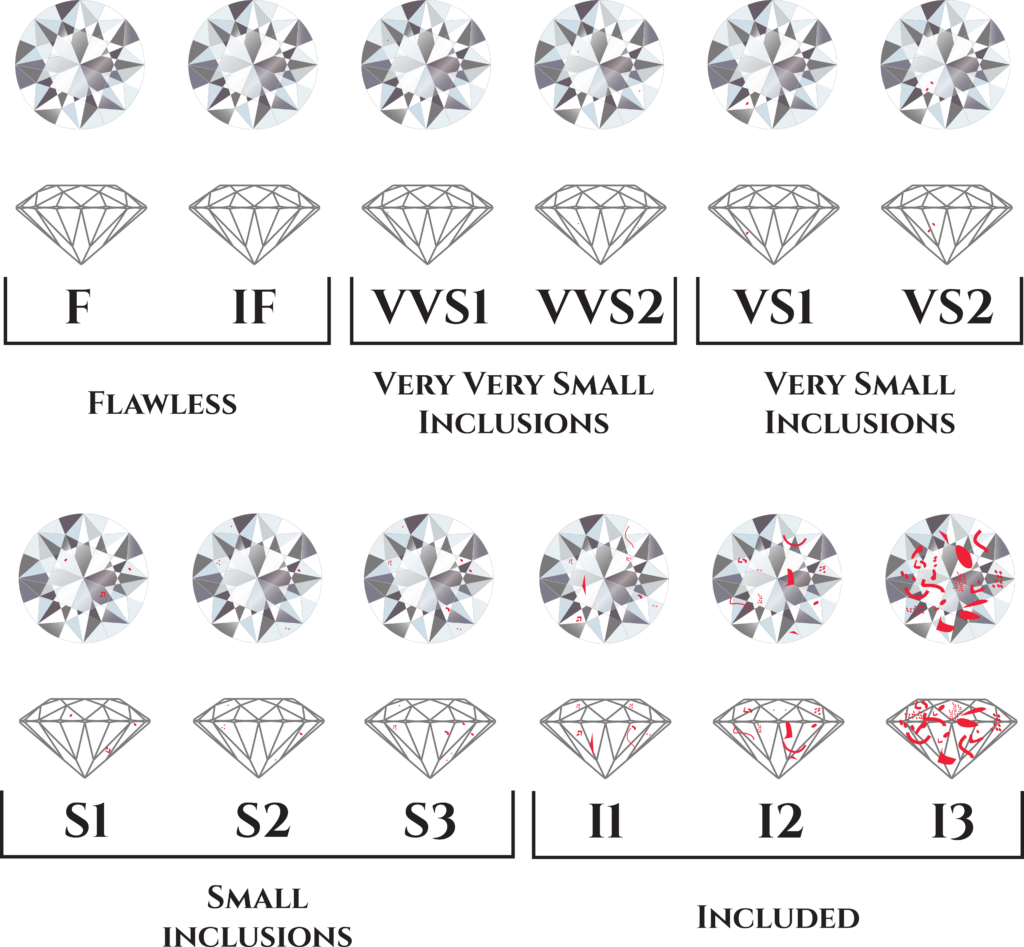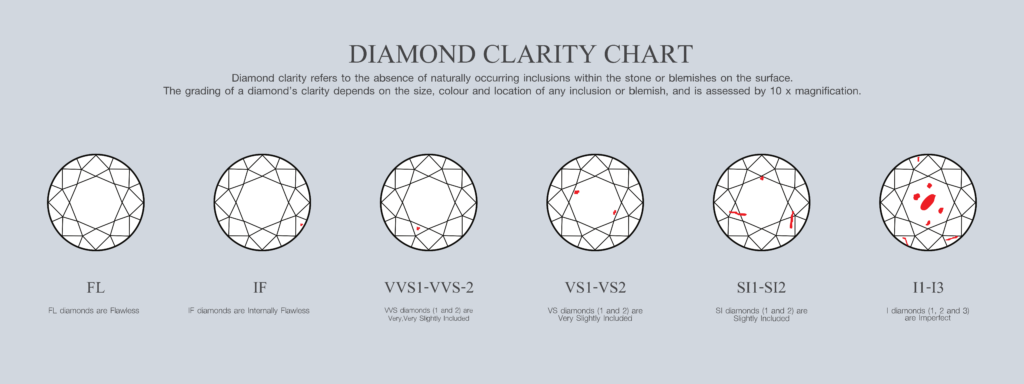
Diamonds form in the earth surface at about 140km to 220 km belowunder high pressure and high temperatures. Due to the conditions in which they are forming, it is almost inevitable that the diamond would not have any clarity characteristic. But what is a clarity characteristic? It is an inclusion or a blemish in a diamond. An inclusion is a clarity characteristic located inside the diamond or reaching into it from the surface (called surface-reaching inclusion). In contrast, blemish is located on the surface of a gemstone. The less clarity characteristics the diamond has, the more rare it is, and consequently the more expensive. However, these characteristics make the diamond unique and by checking for them, one can even identify the diamond.
There are different types of clarity characteristics. For example, the tiny crystal can get trapped in the diamond, which can be of any colour. And if it is big enough it can affect the diamond’s overall colour. When the diamond is growing, the diamond crystal can develop irregularities in its atomic structure as well, which are called graining and can look like lines or striations. Additionally, a diamond can have a break in its crystal lattice while forming due to the conditions it is growing in or while it is being delivered to the surface through a kimberlite. The breakage is considered a clarity characteristic as well. Many types of characteristics set the clarity grade.
The Breakdown of Clarity Grade.

The clarity grade is always assigned using a loupe under the 10x magnification. It is important to keep in mind that inclusions affect the clarity grade more than blemishes.
1. Flawless (FL)
The FL grade is assigned to a diamond when there are no inclusions and blemishes visible. It can have an extra facet, which is not visible under the 10x and naturals (a type of inclusion that is created by nature, looks like an extra facet) that are on the girdle.
2. Internally Flawless (IF)
The IF grade is assigned to a diamond that has only blemishes that are difficult to see and no inclusions.
3. Very Very Slightly Included (VVS1, VVS2)
VVS grade diamond has minute inclusions and may have blemishes as well. The inclusions are very difficult to see when holding a stone face-up (table up) or they may be only possible to spot when looking through the pavilion (lower part of the stone). Furthermore, there may be a surface-reaching inclusion. It depends on the ability to see the inclusion, its size, nature, and location whether the diamond is given VVS1 grade or VVS2 grade. VVS1 or VVS2 stones never have a crystal in them, the presence of the crystal automatically lowers the grade to VS.
4. Very Slightly Included (VS1, VS2)
VS grade diamond has minor inclusions which are difficult to sort of easy to see. In this case, all types of inclusions and blemishes are possible. As mentioned before, VS gemstone can have a crystal in it.
5. Slightly Included (SI1, SI2)
SI diamonds have noticeable inclusions that are usually located on the table and are easy to very easy to see under 10x. SI2 may contain inclusions that are visible without the magnification, but that would not be the case with the SI1 grade.
6. Included (I1, I2, I3)
I diamonds have obvious inclusions under 10x. While in the I3 stone, the inclusions are extremely visible without magnification, the I1 stone usually contains inclusions that are visible to a certain extent, but not extreme. When a diamond is given an I grade it means that either there are many inclusions or they are quite large and may affect the durability of the stone.
When setting a clarity grade the diamond grader uses these words as a guide:
Minute → VVS
Minor → VS
Noticeable → SI
Obvious → I
As you may have understood, the clarity grade is assigned based on the visibility of inclusions and blemishes in the diamond. The lower the grade, the higher the number of inclusions and the more visible they are. As a consumer, it is worth keeping in mind that FL, IF stones are extremely rare in nature and this rarity is reflected in the price. VVS stones are quite rare as well but the clarity characteristics there make the gem unique and allow for a gem identification. These days, VS and SI diamonds are quite common in the trade. It is possible to find a good quality stone of VS grade or SI1. The clarity grade of I is not very desirable among the customers, even though they are still available in the industry in large quantities.

